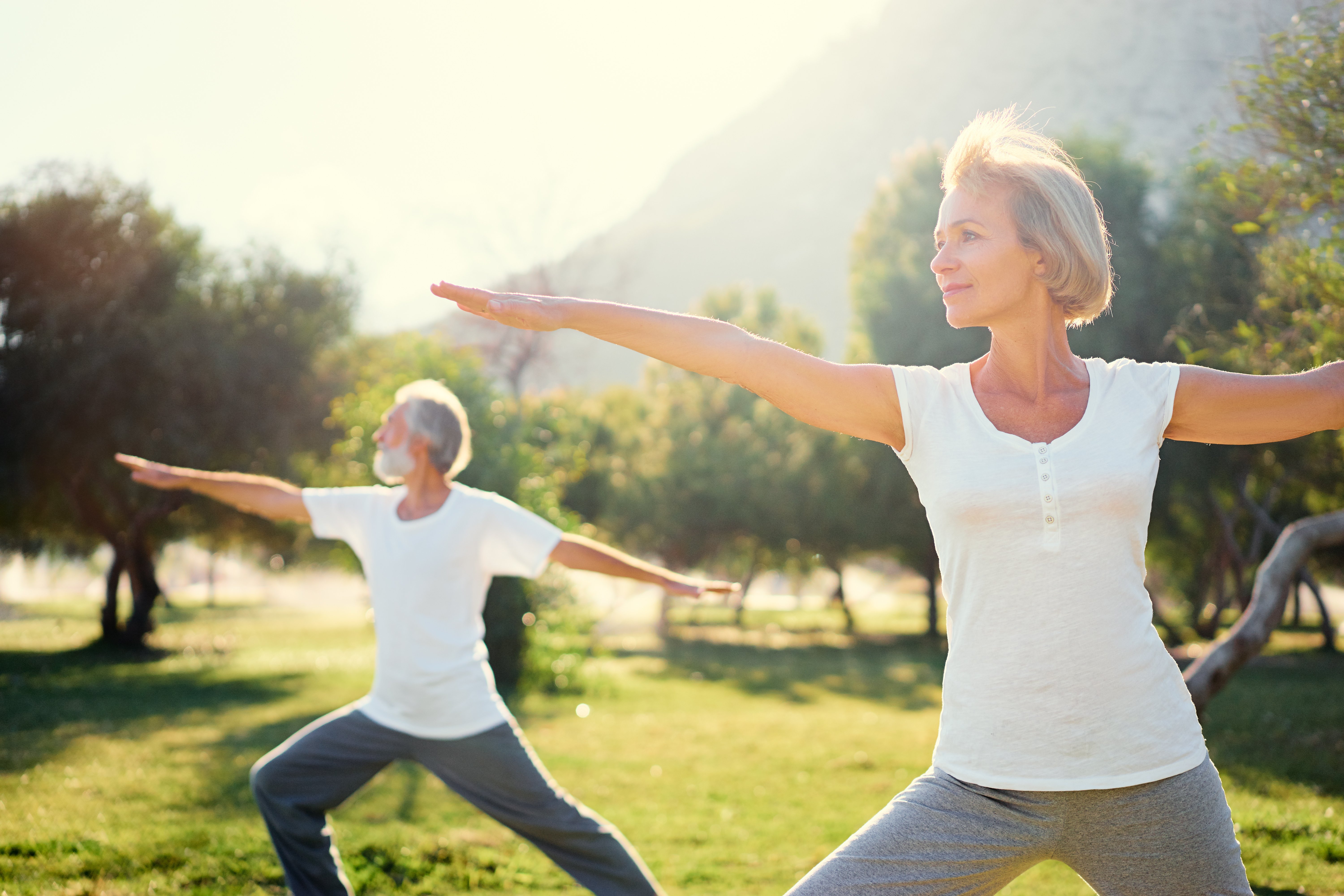Living through the pain of arthritis can be hard to do. Swelling, tenderness, pain, decreased range of motion, fatigue, and weakness are just a few of the symptoms seniors with arthritis face each day. Arthritis can become a crippling condition in a variety of areas in your life. But managing arthritis as a senior is possible with the right education, treatment, and care. Physical activity has vast physical, mental, and emotional benefits at any age, and is one of the ways seniors with arthritis can manage their arthritis symptoms and pain.
Importance of Healthy Movement
Arthritis is not a specific disease but rather a broad term that refers to joint pain and disease. People all over the world suffer from more than 100 different types of arthritis, with nearly half of all seniors reporting an arthritis diagnosis. That makes arthritis one of the most common conditions shared by seniors. With symptoms like pain, stiffness, swelling, and a decreased range of motion, seniors can experience arthritis in almost any area of the body.
Though there is no cure for arthritis, it can be managed with proper care. To minimize the symptoms associated with arthritis, as well as preserving the function of your joints, it's important to take charge of your healthcare. Ways to treat and manage arthritis include maintaining a healthy weight and diet, getting plenty of exercise, and sticking to doctor-recommended regimens.
It can be hard for seniors to partake in physical activity with the stiffness and pain associated with arthritis. But physical activity is actually crucial for seniors with arthritis. A few of the arthritic advantages that exercise can provide include the following:
- Increased flexibility, balance, and range of motion
- Increased strength and muscle tone
- Decreased joint pain
- Decreased fatigue and weakness
- Improved night's sleep
Tips for Exercising with Arthritis
With arthritis, it can be easy to feel limited. But by taking the proper precautions and putting yourself out there, you can get active and start feeling better. Here are a few tips to exercising with arthritis as a senior"
- Move gently, start slow, and don't overdo it
- Trade long exercise sessions for shorter (15 to 30 minutes) ones
- Focus on low-impact exercises, which minimizes stress on the joints
- Take time to recover properly
- Check with your doctor before beginning any new, physical activity
5 Low-Impact Exercises for Seniors with Arthritis
When an exercise or physical activity is labeled as "low-impact," it means that there is minimal stress, weight, and pressure placed on the joints during the exercise. These types of exercises are best for seniors with arthritis because they allow you to stretch, build muscle, and enjoy the benefits of a workout without putting your joints through too much stress.
Here are 5 types of exercises seniors with arthritis can enjoy.
1. Yoga or Pilates
You may associate yoga and Pilates with a younger generation in fluid, compromising positions. But yoga and Pilates can be enjoyed by people of all ages and limitations. Even those with the smallest range of motion and most tender of joints can benefit from the deep relaxation techniques, stretching, and boost to the immune system.
The gentle movements in yoga help maintain mobility and movement, while Pilates is great for strengthening the muscles and building up strong joints. And don't worry about age, because both types of activities can be modified to suit any physical need.
2. Walking
For seniors with arthritis in the knees or hips, this exercise may be more difficult. But walking for around 30 minutes a day can help to strengthen your bones and muscles, work up a good heart rate, increase your general range of motion, improve your balance, and help you maintain a healthy weight.
Even if it's just 10 minutes at a time, walking at a comfortable pace is something most people can do with ease. To help build endurance, muscle, and flexibility, try challenging yourself to walk a little more each time. Enlist a friend to walk with you, and the time will pass even quicker.
3. Biking/Cycling
It doesn't matter if it's a stationary bike, an exercise bike, or a real-life bicycle, cycling is a great exercise that produces a minimal impact on your joints. In fact, most people can cycle with ease and enjoyment. Even without pushing yourself, cycling provides you with great health benefits, without making you uncomfortable.
Seniors can easily adjust the resistance levels, heights, sears, speeds, and times of the workout to suit any physical need. For seniors that are fit enough to brave a biking adventure, it can also be a great social activity. Recumbent bikes, on the other hand, remove all weight from your upper and lower body.
4. Tai Chi
For seniors looking for an exercise that's great for a limited range of motion or significant pain, Tai Chi could be it. This ancient form of exercise involves very slow, smooth movements that work wonders for balance, flexibility, mobility, and pain management. And because the movements in Tai Chi are so smooth, it can be done for longer periods of time than most other exercises.
Alongside better balance and range of motion, Tai Chi can also help manage stress and strengthen joints and muscles. As you progress, you can add more movements, for longer periods of time.
5. Water Aerobics
Water decreases the feeling of your own weight, making yourself feeling lighter. This makes exercising in the water one of the best ideas for any senior with arthritis. With supervision, seniors can weight lift in the water, take laps, or participate in a water aerobics class.
Being in the water allows you to move key areas of the body that require the most care, with putting any pressure on them. With water workouts, you'll enjoy better flexibility, decreased joint pain and stiffness, and better muscle tone.
Arthritis may not have a cure, but it doesn't have to stop you from enjoying a healthy and happy life. for more exercise ideas, check out our infographic: exercises to increase balance.


